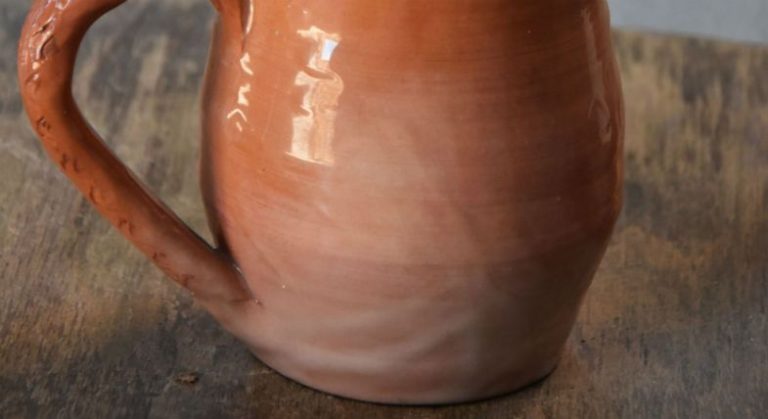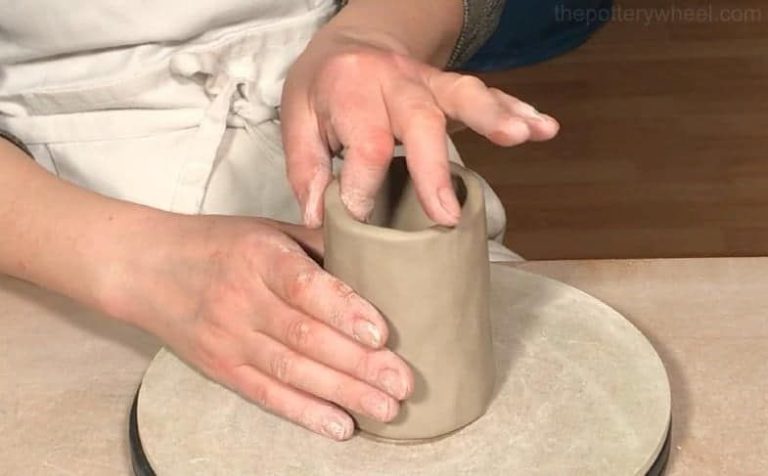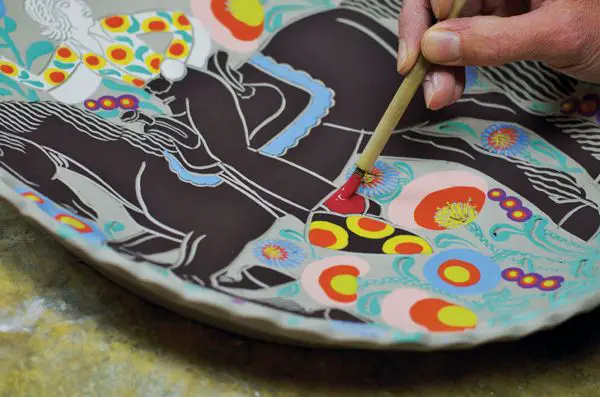Can Clay Dry Without Baking?
Clay is a natural material composed of fine-grained minerals such as kaolinite. It is versatile and can be molded into a variety of shapes. But before clay can be used for pottery, sculpture, or other projects, it must be dried and hardened. This leads to the common question – can clay dry without baking?
The drying and baking process is fundamental yet often misunderstood. While both processes harden clay, they function differently. Understanding the distinction allows you to achieve desired results. This guide will provide an in-depth look at clay composition, the processes of air drying versus baking, benefits and downsides, and tips for proper drying techniques. Whether an aspiring ceramicist or a casual crafter, this overview will equip you with clay knowledge to create your next masterpiece.
Clay Composition
Clay is made up of a variety of natural ingredients that give it its unique properties. The main ingredients in clay are silica, alumina, and water. Silica is silicon dioxide and makes up over 40% of clay’s composition. It provides plasticity and strength. Alumina is aluminum oxide and makes up around 20% of clay. It helps provide clay its hardness when fired. Water makes up variable amounts depending on the type of clay, but generally constitutes 10-20%. It provides plasticity so clay can be shaped.
There are three main types of clay based on their composition: earthenware clay, stoneware clay, and porcelain clay. Earthenware clay contains more silica and iron, making it more porous and prone to water absorption. Stoneware has more flux materials like feldspar, resulting in less porosity and greater vitrification when fired. Porcelain contains mainly kaolin clay and becomes fully vitrified at high temperatures, making it non-porous.
Drying Clay
Clay can be dried through natural air drying or using artificial drying methods. With natural air drying, the clay is simply left out in the open air to slowly release moisture over time. This allows the water within the clay to evaporate until the clay hardens. Air drying relies on the circulation of air around the clay to carry away the moisture. It’s a more gradual process that can take weeks for a large piece. Thinner pieces may only take a few days to fully air dry.
Artificial drying uses mechanical systems to speed up the drying process. These may include electric or gas kilns, dehydrators, heat lamps, hair dryers, or other methods that apply controlled heat. The additional heat helps the water in the clay evaporate faster than air drying alone. Drying times can be reduced to hours or days rather than weeks. Artificial drying methods allow more control and predictability over the rate of drying.
Both natural air drying and artificial drying methods are ways to remove moisture from the clay before firing. Air drying alone will fully harden the clay without the need for baking. However, baking makes the clay stronger.
Baking Clay
Clay is baked in a kiln to permanently harden it through a process called sintering. When clay is baked at high temperatures ranging from 1100°F to over 2000°F, the clay particles partially melt and fuse together through vitrification. This makes the clay much denser, less porous, and significantly harder and more durable than air-dried clay.
The baking process allows the clay to become impervious to water and withstand more wear and tear. It also evens out any cracking or breakage that can occur when clay air dries. Glazes can also only properly fuse and bond to the clay body when baked at the right temperatures.
Baking times and temperatures depend on factors like the clay type, size of pieces, and desired hardness. Typical firing ranges are:
– Earthenware clays: 1100°F to 2100°F
– Stoneware clays: 2100°F to 2300°F
– Porcelain clays: 2300°F to 2500°F
Higher temperatures make the clay more vitrified and durable. Baking clay permanently hardens it for use in pottery, sculptures, tiles, and other applications requiring strength and imperviousness to water.
Drying vs Baking
There are two main methods for hardening clay – air drying and baking. Both have their pros and cons.
Air drying is the process of allowing clay to dry naturally at room temperature over time. It does not require an oven or other equipment. The main advantage of air drying is convenience – you can let your clay projects dry on a shelf or countertop without extra steps. Air drying also allows you to avoid the risks of burning or under-firing that can happen with baking. However, air dried clay is more fragile and breakable than baked clay. Pieces may crack or crumble if dropped. Air dried pieces are also not waterproof.
Baking clay requires placing it in a kiln or oven at high temperatures, usually between 135°C and 165°C. Baking makes the clay much more durable and water-resistant. The high heat from baking fuses the clay particles together into a permanent ceramic material. This prevents cracking, chipping and breakage. Glazes and finishes can also only be properly set on baked clay. The downside is that baking requires more equipment, risks over or under-firing, and can cause damage if temperatures are not correct.
In summary, air drying is simpler but produces weaker pieces, while baking makes much stronger and finished ceramics but requires more effort. The choice depends on the needs of the particular project.
Factors in Drying Clay
The rate and success of air drying clay depends on several key factors:
Climate. Warm, dry climates will cause clay to dry faster. Cooler or more humid environments slow the drying process. Direct sunlight can accelerate drying but may cause cracking.
Thickness. Thin pieces dry quickest. Sculptures or clay works over 1-2 inches thick can take weeks or months to fully air dry.
Type of Clay. Natural clays with higher grog or sediment content tend to dry faster. Polymer clays formulated for air drying harden quicker than traditional earthen clays.
Drying Method. Exposing all surfaces to air flow speeds drying. Placing clay in an arid environment with circulating air or fan helps moisture evaporate.
Paying attention to these factors allows controlling the drying conditions. With the right climate and preparation, even large earthenware pieces can successfully air dry without cracking or other defects.
Downsides of Air Drying
While air drying clay has its benefits, there are some downsides to be aware of when choosing this method over baking:
Increased Fragility: Clay that is air dried is more prone to cracking and breaking than clay that has been properly fired in a kiln. The drying process leaves air pockets and inconsistencies in the clay that weaken its internal structure.
Slower Drying Time: Depending on factors like thickness, air drying alone can take weeks or even months for clay to fully dry, whereas baking typically takes only hours. Air drying requires more patience and care to prevent warping or cracking during the long setting period.
Potential Cracking: If clay dries too quickly or unevenly, internal stresses can cause cracks. Air drying has a higher risk of cracking compared to controlled kiln drying. Proper conditioning of clay and slow controlled drying helps minimize this.
While these downsides can be managed with care, air dried pieces will be inherently more delicate and take longer to reach full hardness. Air drying works best for items that do not need to bear a lot of weight or withstand heavy use over time compared to kiln fired clay.
Benefits of Air Drying
Air drying clay has several advantages over baking clay in a kiln. For many crafters and artists, the eco-friendly nature of air drying is a major plus. Firing clay in a kiln uses a tremendous amount of energy, resulting in a large carbon footprint. In contrast, simply leaving clay to dry naturally does not consume additional energy resources.
Additionally, the process of air drying clay is much simpler compared to properly firing clay in a kiln. Kilns require careful temperature control and monitoring to avoid under-firing or over-firing the clay. With air drying, the clay will cure correctly without any special equipment or effort. This simplicity also leads to potential cost savings, since no kiln or firing supplies are necessary.
Overall, air drying eliminates the time, energy, equipment, and knowledge needed for the baking process. While it may take longer for air dried clay to fully cure, the eco-friendliness and simplicity of the technique makes it an appealing choice for many projects and users.
Tips for Air Drying
There are several techniques you can use to help clay fully dry without baking:
- Use a drying rack or screen – Lay the clay pieces out on a wire rack or screen to allow air circulation on all sides.
- Rotate pieces – Flip clay items over every 12-24 hours so both sides get evenly dried.
- Slice thicker pieces – Cut thicker clay sections in half to expose the innermost areas to air.
- Avoid humid areas – Keep clay away from moisture and damp environments that will slow drying.
- Use a fan or dehumidifier – Direct a fan towards drying clay or use a dehumidifier to speed up the process.
- Store properly – Once dry, pack pieces into airtight containers to prevent reabsorption of moisture.
Patience is key when air drying clay. Allow sufficient time for thorough drying before handling pieces. Rushing can lead to cracks, breakage, and under-dried interiors. Monitor clay closely and use these tips to aid successful air drying.
Conclusion
To summarize, air drying clay can successfully harden without baking, although it takes longer compared to baking and may not achieve maximum hardness. The key factors that enable clay to dry without an oven are its clay composition and the drying environment. Air drying clay avoids the energy costs and extra steps of baking, but can lead to cracking or weakness if not dried thoroughly. With reasonable expectations and some care, crafters can successfully experiment with air drying their clay creations. The versatility and simplicity of air drying makes it an accessible option worth exploring.




